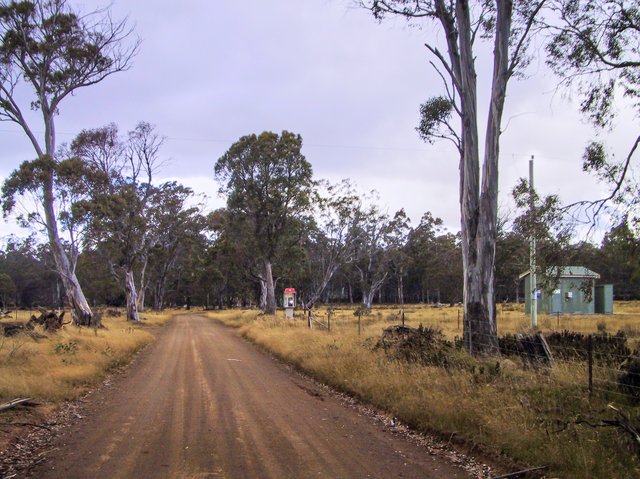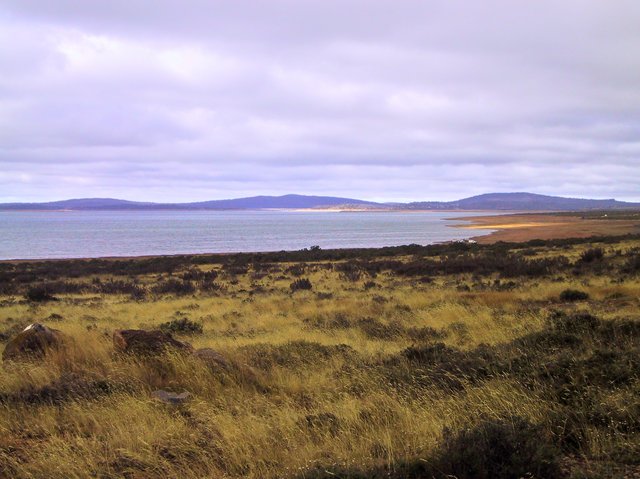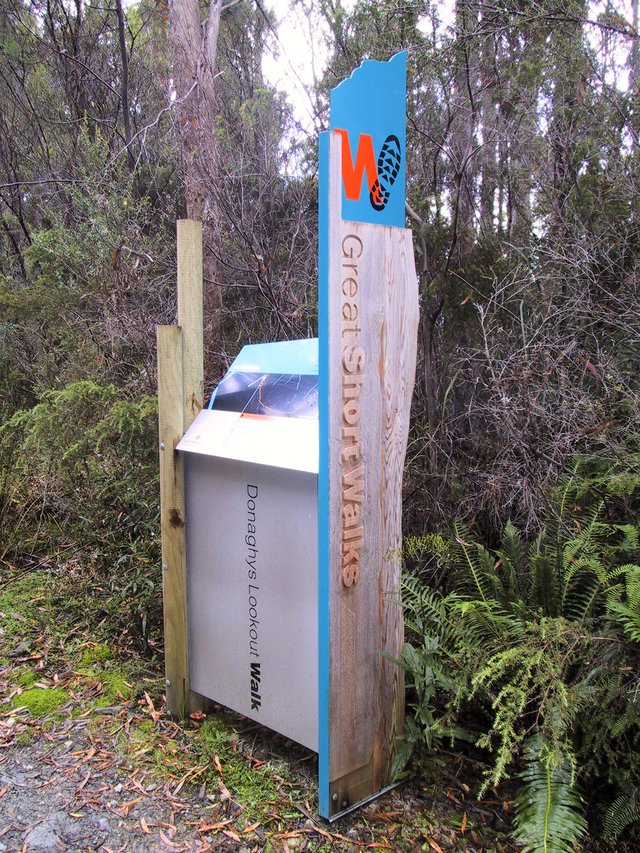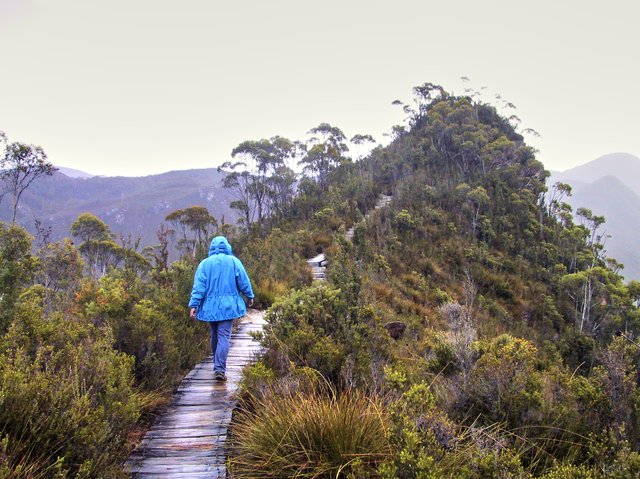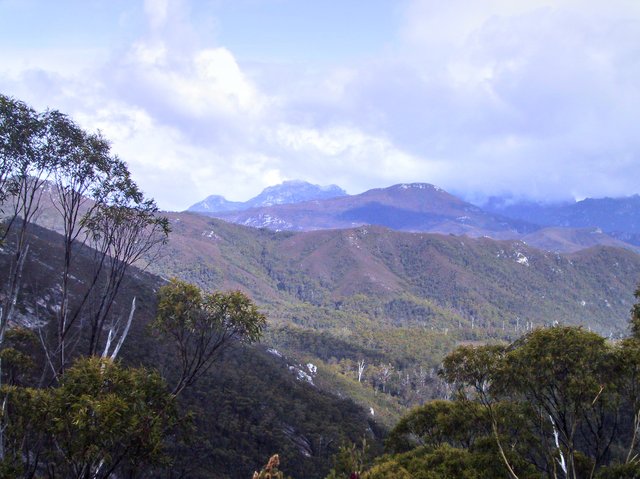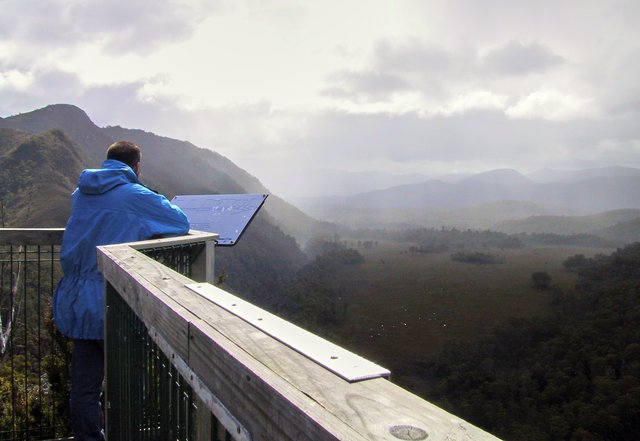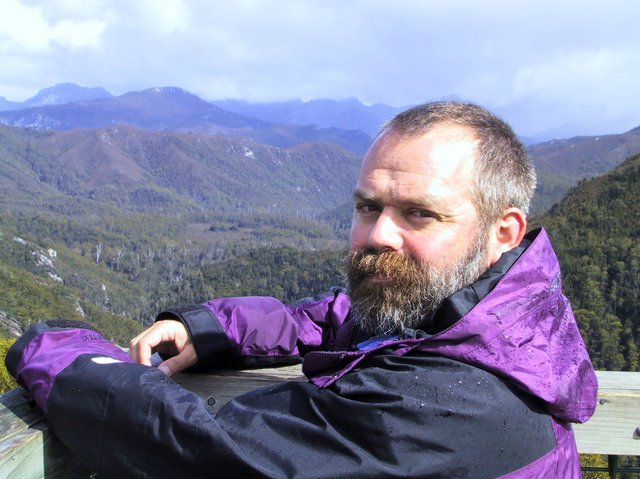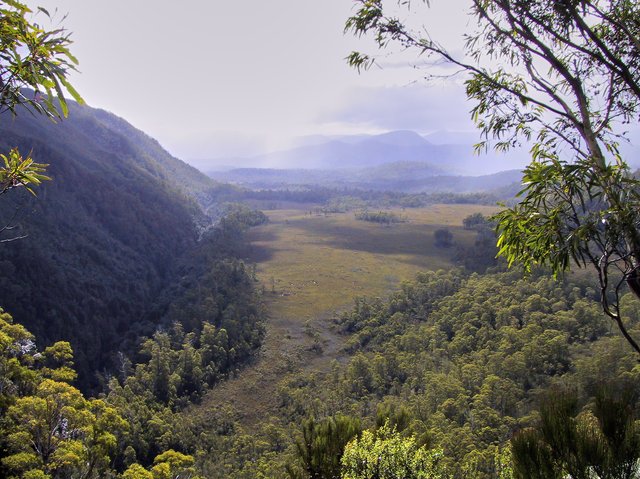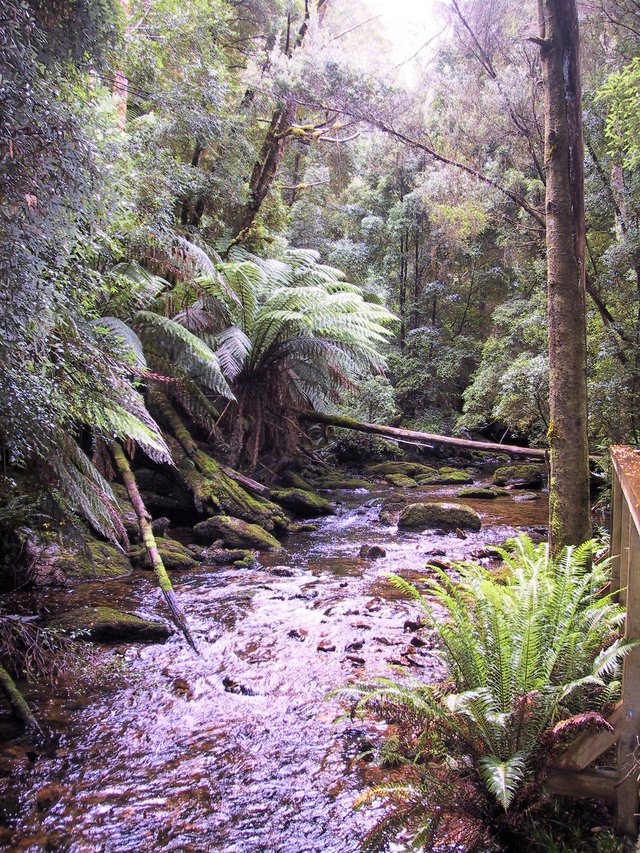Breakfast at the Oatlands Lodge was quick, we then headed out on the road across the Central Highlands, following a route described in the big "Explore Australia by Four Wheel Drive", a big bible of a book we picked up somewhere in Sydney.
Interlaken was our first stop; it looked like a town between two lakes and I had vague visions of a Swiss like village. Sorry, no. It was in high grazing country, with sparse eucalypts and fields, the village was no more than a few sheds and some battered weatherboard houses. What's more is that one of the two lakes was dry. We moved on to the old power station at Waddamana, now a museum.
And it was a closed museum. It's open daily from 10am to 4pm, "except Good Friday and Christmas". Well, it was Good Friday and it was closed. Looked interesting, oh well, on to Miena on the Great Lake, the largest lake in the state and definitely in the highlands.
Miena was windswept and dusty and set on scrub plains at the edge of a lake that looked like a reservoir: it had a rim of 50m of barren ground up from its shores. And it was windy and 10C. Not idyllic in the least. Again, we drove on--there were lakes on the map to the west, maybe they were more scenic, and in fact they were in the World Heritage Area! But, no, disappointment again. More scrub and howling wind and cloudy skies; more like eastern Oregon, or west Texas to my eyes. No mountains, just some low ridges here and there blocking the view. We didn't make it all the way to the end of the road; we decided not to go the full 80km and turned around.
At Bronte Park things got a bit more interesting, we started seeing a more lush landscape. We stopped at Lake St. Clair--the southern end of the Overland Track--where we saw throngs of backpackers finishing up (and speaking German, of course). It was just a bit too mass eco-tourism for us, so we quickly made peanut butter and leatherwood honey sandwiches from our food stash and drove west, and then things finally got interesting.
The Franklin River Nature Walk was fairly informative (with a neat looking toilet block), and the river itself was very pretty, shaded by myrtle (Nothofagus), sassafras (Antherosperma), and leatherwood (Eucryphia). Not much eucalyptus here! Further down, we walked to Donaghy's Lookout, which had great views up and down the Collingwood River and deep into the mountain ranges of the Tasmanian southwest. It felt very primitive looking up into the mountains and along the river's floodplains; the mosaic of rainforest and dry eucalypt forest and buttongrass moors seemed untouched by human influence; dinosaurs wouldn't have looked out of place.
Donaghy's Lookout did lack one thing: bus tourists, which we encountered whole hordes of at the next stop, Nelson's Falls. From there, we drove through Queenstown, a mining town that stripped the rainforest 100 years ago for miles around to feed the smelters. With no groundcover, the topsoil had washed away, leaving bedrock, and the smelters had spewed quite a bit of sulfur into the air which colored many of the rock surfaces with an odd yellow color. It wasn't as ghastly as the guidebooks made it out to be--the hillsides had colonizing plants like sedges and blackwood acacia--but it did feel out of place. Mining still goes on there for copper.

From Queenstown, we headed into Strahan, a pleasant fishing and tourist village for the night.
